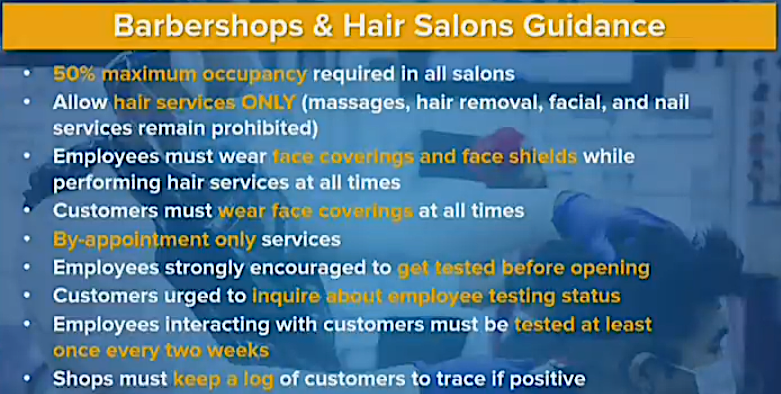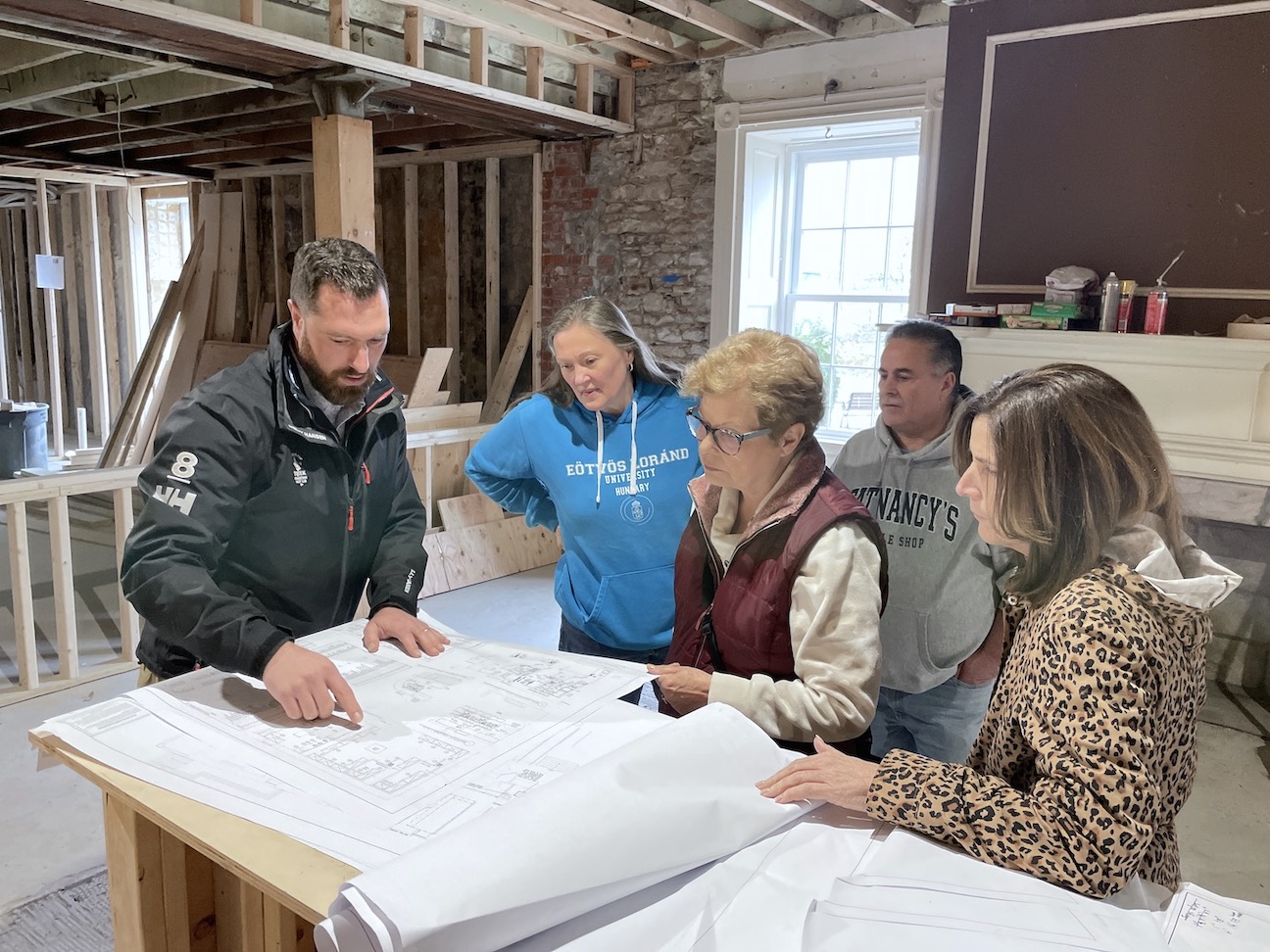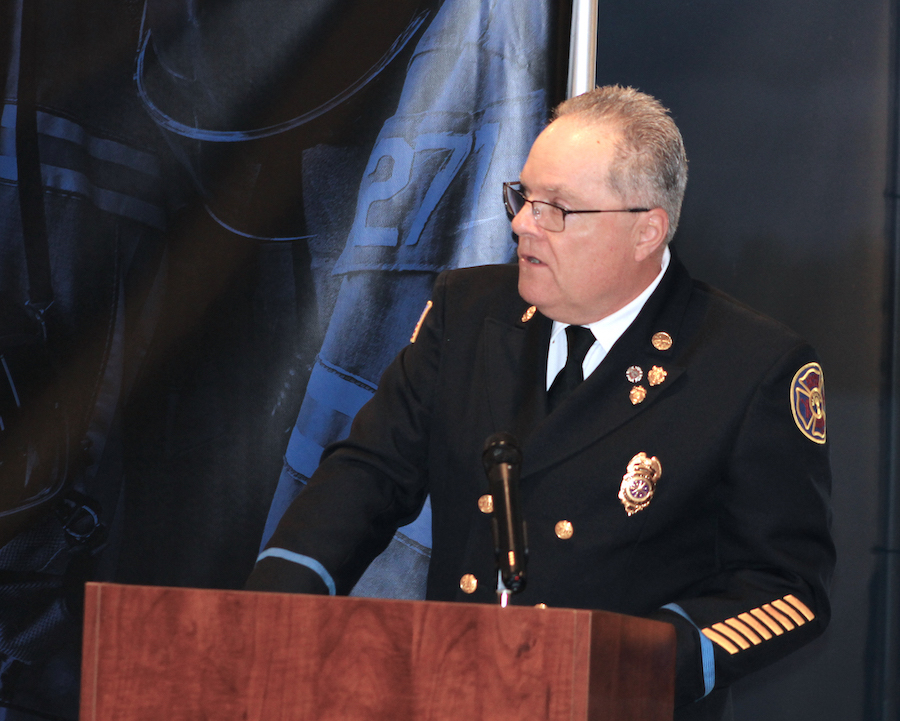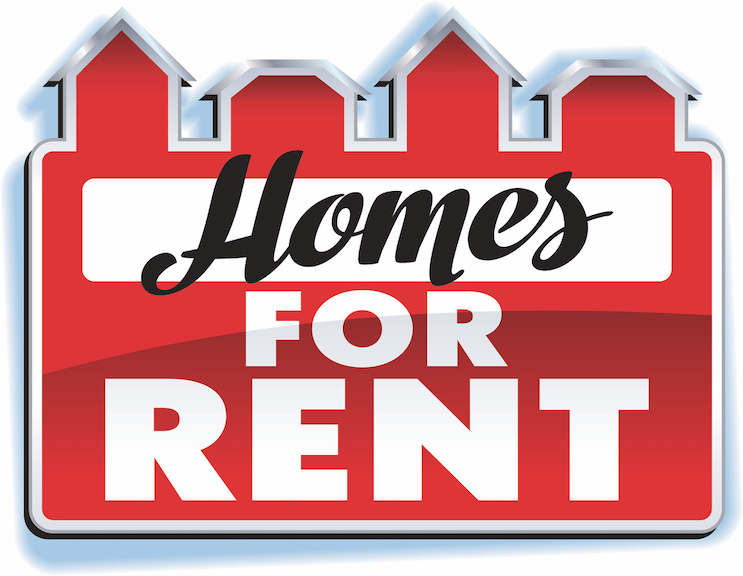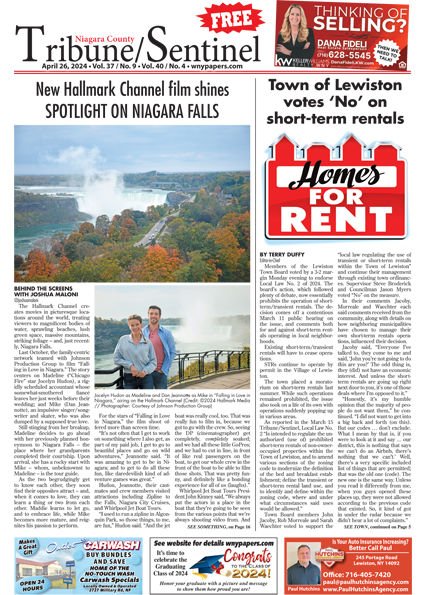Featured News - Current News - Archived News - News Categories
Region gearing up for phase 2; Cuomo: ‘All the data looks very good’
Western New York is entering phase two of Gov. Andrew Cuomo’s reopening plan on Tuesday.
In a morning press conference, Cuomo said, "Buffalo enters phase two today."
The governor also said the state COVID-19 situation is “going very well.”
"Today is day 94 of the COVID-19 pandemic and, if you look at the progress we have made in New York, it's breathtaking how far and how fast we've come," Cuomo said. "We have more good news today – the number of hospitalizations is down, the number of new COVID cases walking in the door is at an all-time low and the number of deaths is just about as low as we have seen it. As the numbers continue to decline, Western New York is now ready to begin phase two of reopening, and the Capital Region remains on track to open for phase two tomorrow."
Dr. Michael Osterholm, director of the Center for Infectious Disease Research and Policy at the University of Minnesota, said, "As the next two regions in New York state have been given the green light to begin to move from phase one to phase two the state's new early warning dashboard will help to mitigate any problems that arise. It is critical to continue to move forward based on data and New York state is doing just that."
Dr. Samir Bhatt, senior lecturer (associate professor) in geostatistics, the department of infectious disease epidemiology, Imperial College London, said, "As the Western New York and Capital regions begin to move from phase one to phase two, the state's metrics provide a comprehensive view for tracking and controlling the disease. We will continue to monitor these data closely in order to make sure the next phase is implemented in a manner that balances public health and economic activity."
Phase two includes:
Western New York’s reopening “control room” is headed by Lt. Gov. Kathy Hochul and includes Erie County Executive Mark Poloncarz and Niagara County Legislature Chairwoman Becky Wydysh.
Speaking on LCTV Monday afternoon, Niagara County Legislature Chairwoman Becky Wydysh said, “All of our data is looking good here in Western New York. ... The governor said that Western New York's metrics are good; they're continuing to monitor that data – and that is music to many of our ears. We have been looking forward to getting into the next phase.”

Also courtesy of LCTV
What Industries Need to Do
Wydysh said, “You're going to have to complete a safety checklist online for the state and affirm that you have that safety plan in place and agree to follow it. You'll also want to make sure that you print that affirmation out along with your safety protocols. Have it on hand at your business for not only your employees, but for the clientele who come in, as well. You want to show that you have followed that procedure – that you are meeting all of the governor's mandates, and that is, again, mandatory for reopening; so please make sure that you're following all of those steps.”
Speaking online to reporters Monday afternoon, Poloncarz said, “If you are a business that is included in the phase two industries, you have to file an attestation with New York state that you have a safety plan in place.”
Poloncarz encouraged phase two companies to visit https://forward.ny.gov.
“You need to download the template that's available, so that you can have a safety plan in place, and then you need to do the attestation with New York state before you can open,” he said. “And that includes professional services like law firms, accounting firms; we know dentists can open now; retail can have less capacity, but they can open up so that you can have people walk in and purchase in-store now; administrative support; real estate; rental and leasing; and then barbers and salons.”
Cuomo also announced summer day camps will open on June 29. He said no decision has been made on sleepaway camps.
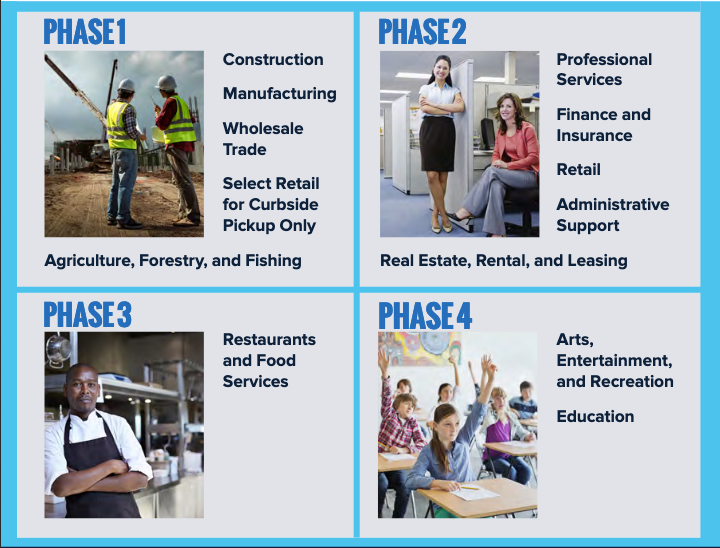
What ISN’T Opening
“New York Forward” stated, “Pursuant to the governor’s executive orders, the following businesses remain closed:
“Malls; specifically, any indoor common portions of retail shopping malls with 100,000 or more square feet of retail space available for lease; however, any stores located within shopping malls, which have their own external entrances open to the public, separate from the general mall entrance (e.g. strip malls), may open;
“Dine-in and on-premise restaurant or bar service, excluding take-out or delivery for off-premise consumption;
“Large gathering/event venues, including but not limited to establishments that host concerts, conferences, or other in-person performances or presentations in front of an in-person audience;
“Gyms, fitness centers, and exercise classes, except for remote or streaming services;
“Video lottery and casino gaming facilities;
“Movie theaters, except drive-ins; and
“Places of public amusement, whether indoors or outdoors, including but not limited to, locations with amusement rides, carnivals, amusement parks, water parks, aquariums, zoos, arcades, fairs, children’s play centers, funplexes, theme parks, bowling alleys, family and children’s attractions.”
Metrics Matter
Each region in New York has to continue to meet the seven “Regional UnPause Dashboard” metrics outlined by Cuomo, which he took from the Centers for Disease Control and World Health Organization. These indicators include hospitalization rate, COVID-19-related deaths, and virus contact tracing capability.
“Again, all of the data we're seeing is good,” Wydysh said. “The metrics are heading in the right direction, and we don't see any reason that they wouldn't let us open in phase two. Hopefully, again, tomorrow; but that data has gone on to the international team that the governor speaks about, who wants to take one final look at those numbers and make sure that we haven't missed anything important that they're considering as a red flag.”
Once a region enters a phase, a two-week period of maintaining the metrics is required before a location can enter into the next stage.
Western New York entered phase one on Tuesday, May 19.
5 Counties Already in Phase 2
Five counties were permitted to enter phase two last week: Central New York, Finger Lakes, Mohawk Valley, North Country and Southern Tier.
“The reason we are so rigorous about is this because many states and countries have reopened and they made mistakes,” Cuomo said on Friday. “Yes, everybody wants to open tomorrow. I wanted to open before we ever closed. But you have to be smart and we have seen what has happened. Painfully, when cities and states and countries reopen too quickly, they wound up closing again – which is the worst situation; so be smart.
“We have the data. We have more data than almost any other place on the globe because of our testing and we have had it reviewed at every level. All the local officials sign off, the regional officials sign off, the best state experts, and then we go to global experts who have done this in countries around the world, who frankly have more experience than we do because they've been through this – the crisis and the closing and the opening and the closing again. And we review all the data with them. …
“But these are literally the best minds you can find on the globe when it comes to this and they have gone through all the data. So, I feel confident that where we can rely on this data, and the five regions that have been in phase one can now move to phase two, because their data has been reviewed and the experts say to us it's safe to move forward, because people have been smart and you haven't seen the spike, so they go to phase two.”
On Monday, Cuomo reported the lowest rate of positive test results since the COVID-19 pandemic began. The state performed 50,000 tests Sunday, with less than 2% returning positive for the coronavirus.
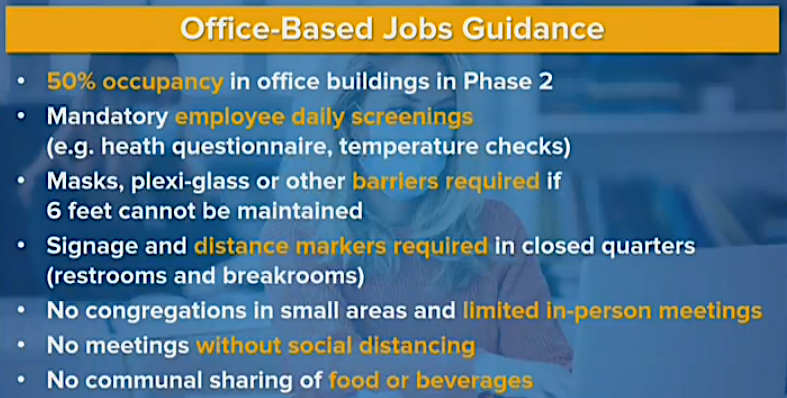

Further Guidelines for Phase 2
The “New York Forward” website reads:
“The guidelines below apply to non-essential businesses in regions that are permitted to reopen, essential businesses throughout the state that were previously permitted to remain open, and commercial and recreational activities that have been permitted to operate statewide with restrictions. If guidance has not yet been published for your specific industry, but you are permitted to reopen, please refer to the NY Forward Safety Plan template.”
Summary guidelines for each industry are available to read HERE.
In short:
√ Offices must “limit the total number of occupants at any given time to no more than 50% of the maximum occupancy for a particular area as set by the certificate of occupancy.”
√ Real estate professionals need, “Ensure that workforce (e.g. salespeople, workers, subcontractors, and vendors) and customer presence total occupancy is limited to 50% of the maximum occupancy for a particular area as set by the certificate of occupancy.”
Mandatory procedures for retail stores include the following:
•Ensure 6 feet distance between individuals, unless safety or core function of the work activity requires a shorter distance.
•Reduce interpersonal contact and congregation through methods such as limiting workforce presence to only the employees necessary to conduct retail activities.
•The workforce and customer presence must be limited to no more than 50% of the maximum occupancy for a particular area set by the certificate of occupancy, inclusive of customers, who must maintain 6 feet of space from others and, in all cases, wear an acceptable face covering.
•Tightly confined spaces (e.g. elevators, small stock rooms, behind cash registers, narrow merchandise aisles) should be occupied by only one individual at a time, unless all individuals are wearing face coverings. If occupied by more than one person, keep occupancy under 50% of maximum capacity.
•Post social distancing markers using tape or signs that denote 6 feet of spacing in commonly used and other applicable areas (e.g. clock in/out stations, health screening stations, break rooms, cash registers, merchandise aisles).
•Limit in-person gatherings (e.g. meetings) as much as possible and use tele-or videoconferencing whenever possible. If a meeting is necessary, it should be held in an open, well-ventilated space with appropriate social distancing among participants.
•Establish designated areas for deliveries, limiting contact to the extent possible.
•Close all fitting rooms and amenities including self-serve bars and samplers.
•Employers must provide employees with an acceptable face covering at no-cost to the employee and have an adequate supply of coverings in case of replacement.
•Acceptable face coverings include but are not limited to cloth (e.g. homemade sewn, quick cut, bandana) and surgical masks, unless the nature of the work requires stricter PPE (e.g. N95 respirator, face shield).
•Face coverings must be cleaned or replaced after use and may not be shared.
•Employers must train employees on how to put on, take off, clean and discard PPE, including face coverings.
•At checkout registers, employees must wear face coverings and employers must enact physical barriers such as plastic shield walls in areas where they would not affect air flow, heating, cooling or ventilation.
•Limit the sharing of objects (e.g. tools, registers and vehicles) and discourage touching of shared surfaces; or, when in contact with shared objects or frequently touched areas, wear gloves (trade-appropriate or medical); or, sanitize or wash hands before and after contact.
"Remember that reopening does not mean that we're going back to the way things were," Cuomo said. "Life is not about going back. Nobody goes back. We go forward. And it's going to be different. This is about reopening to a new normal – a safer normal. People will be wearing masks and people will be socially distanced – it's a new way of interacting, which is what we have to do. Wear a mask, get tested and socially distance."
Late last week, Cuomo signed an executive order extending “New York on PAUSE,” “until and unless later amended or extended by a future executive order.”
That mandate was put in place in March to limit the possible spread of the coronavirus.
"New York Forward" is Cuomo's reopening plan.
